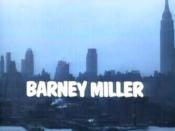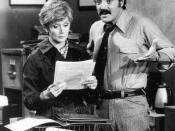Television can have a positive or negative impact on a child. It all depends on many different variables. These variables can include gender, socioeconomic status, race, religion, age, hair color, or anything that a person might use to identify him or herself. For example, a girl with blond hair may feel that she too may not be so bright after viewing an episode of Married with Children. This example, although a bit far-fetched, demonstrates the idea of how children' s views of themselves may be affected by television.
Television has affected social norms. Television is being used to replace human interaction. The idea of going out to play has been replaced with inviting friends in to play videogames. An example of decreased human interaction is when people allow their television to act as a babysitter for their children. Barney (as annoying as some adults find him) is now available to tell nighttime bedtime stories to children by simply popping a tape into the VCR.
One of the major problems with television is violence, especially in cartoons. A cartoon in its essence fails to show the consequences of violence. As a result, children don't learn the real consequences of violence. Whether or not television violence produces violent people is disputable. Media violence, in my opinion, cannot be said to have a direct effect on viewer actions. However, many people share the idea that the abundance of violence does have an effect on our mental well being. Such messages reinforce beliefs that the world is a violent and generally unsafe place and that violence is an effective solution to problems, and violence is safe, gratifying, glamorous, and again, often have no apparent consequences.
The imagination that is often associated with childhood is robbed from those youngsters who spend a considerable amount of time in front of the TV. The imagination is one of childhood's most precious commodities. The constant stream of fantastical images replaces those that children come up with on their own. The result is a multitude of children with the same unrealistic fantasies.





